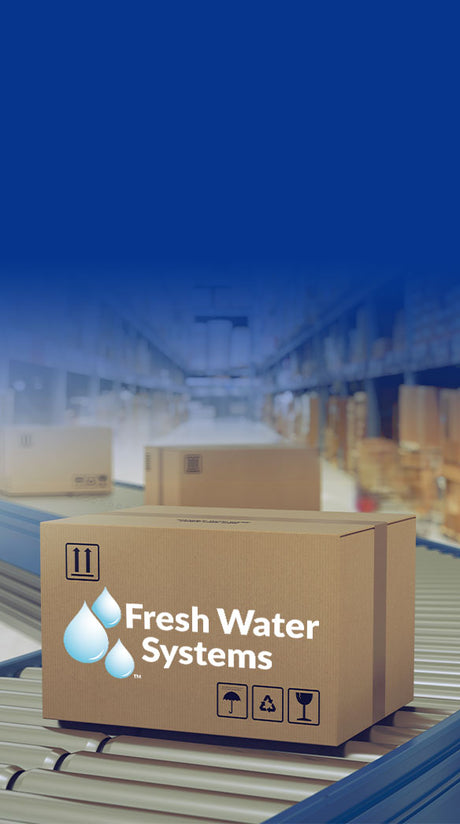Carbon Water Filters
- Regular price From $5.89 Unit priceUnit price /Unavailable
Part #: CTO1-2510
Save up to 5% with bulk pricing - Regular price From $44.99 Unit priceUnit price /Unavailable
Part #: 655123-96
Save up to 8% with bulk pricing - Regular price From $37.22 Unit priceUnit price /UnavailableVery low stock
Part #: 655117-96
Save up to 8% with bulk pricing - Regular price From $36.85 Unit priceUnit price /Unavailable
Part #: CTO1-4520
Save up to 5% with bulk pricing - Regular price From $17.89 Unit priceUnit price /Unavailable
Part #: NP-KW1
Save up to 22% with bulk pricing - Regular price From $22.68 Unit priceUnit price /Unavailable
Part #: NP-LT700P
Save up to 5% with bulk pricing - Regular price From $53.41 Unit priceUnit price /UnavailableLow stock
Part #: 655120-96
Save up to 9% with bulk pricing - Regular price From $96.61 Unit priceUnit price /Unavailable
Part #: 655126-96
- Regular price From $29.00 Unit priceUnit price /UnavailableSold out
Part #: ADQ73613401
Save up to 5% with bulk pricing - Regular price From $33.90 Unit priceUnit price /Unavailable
Part #: NP-A101
Save up to 9% with bulk pricing - Regular price $40.81 Unit priceUnit price /UnavailableVery low stock
Part #: 4140700X
- Regular price From $52.33 Unit priceUnit price /Unavailable
Part #: RC-GXRTQ
- Regular price From $45.32 Unit priceUnit price /Unavailable
Part #: NP-CB6
Save up to 10% with bulk pricing -

Get a Quote
Fast, Free, Custom
- Regular price $48.68 Unit priceUnit price /Unavailable
Part #: 3MROP416
- Regular price From $24.49 Unit priceUnit price /Unavailable
Part #: CTO1-4510
Save up to 7% with bulk pricing - Regular price $11.33 Unit priceUnit price /Unavailable
Part #: K2540-BB
- Regular price $15.38 Unit priceUnit price /Unavailable
Part #: 41407002
- Regular price From $20.10 Unit priceUnit price /Unavailable
Part #: NP-RFG10BB
Save up to 5% with bulk pricing - Regular price From $41.40 Unit priceUnit price /Unavailable
Part #: NP-P12PLUS
Save up to 10% with bulk pricing - Regular price From $145.61 Unit priceUnit price /Unavailable
Part #: 455906-43
- Regular price From $55.07 Unit priceUnit price /Unavailable
Part #: 3MROP412
Save up to 2% with bulk pricing - Regular price From $28.99 Unit priceUnit price /UnavailableSold out
Part #: 5231JA2002A
Save up to 5% with bulk pricing - Regular price From $17.41 Unit priceUnit price /Unavailable
Part #: CTO1-2520
Save up to 5% with bulk pricing -

MOST ORDERS OVER $89
FREE SHIPPING
- Regular price $12.99 Unit priceUnit price /Unavailable
Part #: K2340-KK
- Regular price From $164.41 Unit priceUnit price /UnavailableVery low stock
Part #: 55851-02
Save up to 13% with bulk pricing Frigidaire
Regular price From $37.80 Unit priceUnit price /UnavailableSold outPart #: WF2CB
Save up to 5% with bulk pricing
Want to learn more?
Carbon filters help to remove common chemicals such as chlorine, chloramine, pesticides, and herbicides from your water supply. Chlorine and chloramine are commonly used by municipal water companies in an effort to disinfect water against harmful bacteria. Though important, this process leaves behind chemicals and in turn, creates water that tastes and smells bad. A carbon filter helps reduce unwanted taste, odors, and dirt, while ensuring clean water flows through your home.
How does carbon filtering work?
Carbon filters work through a process called adsorption, not to be confused with absorption, in which the water flows through a carbon barrier forcing contaminants into open pores in the carbon and bonding with unwanted chemicals, thus detoxifying your drinking water.
What are the different types of carbon filters?
While there are several different methods of carbon filtration, carbon filters often fall into one of three categories: granular activated carbon filters (GAC), carbon block filters, and radial flow GAC filters. All of these filters are made up of finely ground carbon that has been treated with heat or steam. This process creates “activated carbon,” effectively increasing the surface area and opening up pores in the element for greater adsorption.
As the name suggests, granular activated carbon filters are made up of individual granules providing an easy channel for filtration. These filters excel in providing a high water flow rate while maintaining adequate filtration. Adversely, water only has one flow channel, meaning there is potential for contaminants to get through, as the pores have less time and surface area for adsorption to take place.
Carbon block filters make use of activated carbon in a more dense structure. The once granular carbon is compressed to form a solid, porous piece of carbon. This allows for higher capacity as the water has much more surface area to funnel through but the flow is far more restricted than a GAC filter.
Lastly, radial flow GAC filters combine the advantages of the GAC and block filter, creating a product that has a large capacity along with a high flow potential.
What is the difference between activated carbon and catalytic carbon?
The difference between activated carbon and catalytic carbon is simply an additional treatment process activated carbon undergoes. Catalytic carbon also goes through the activation process but is treated again to become a catalyst. This additional step allows carbon to bond with chloramine and removes it from your water supply. Non-catalytic carbon does not have the same bonding properties and will allow chloramine to pass through uninterrupted. Understanding what chemicals are in your water is vital to develop the correct filtration solution. Water testing kits can help provide insight when choosing between filters while also uncovering other contaminants within your drinking water.
What do carbon filters remove?
The main purpose of these filters is to reduce common chemicals (listed below) in your drinking water. Depending on the type, size and NSF certification of the filter, more contaminants such as lead, iron, and bacteria may also be removed.
- - Bad tastes and odors
- - Volatile organic compounds
- - Solvents - degreasers, cleaning agents
- - Gasoline compounds
- - Chlorine
- - Chloramine (Only with catalytic carbon filters)
- - Pesticides
- - Herbicides
- - Lead, Iron and other heavy metals (Only if the filter is certified for the specific metal)
It is important to understand these filters do not reduce all contaminants. Dissolved minerals such as calcium and magnesium will remain unchanged. However, the smaller the pore size of the filter, the more contaminants will be removed. This is due to the particles simply being too large and unable to fit through the pores.
Where should I install my carbon filter?
Selecting the correct filter installation placement is important to create a properly functioning filtration system. It is more common that a filter is installed in one of two places, point-of-entry (POE) or point-of-use (POU) to get the most out of your system. Point-of-entry refers to the start of your water system or where the water for your home enters, this method allows you to cast a wide net and cover the entirety of your water supply. Point-of-use is narrow and focused on one source, for example, the kitchen sink faucet. This enables the user to target a specific problem location. If you are looking to eliminate chlorine from the totality of your home’s water-using appliances (like your shower or bathtub), a whole-house carbon filtration system would better serve you.
Choosing between POE or POU depends entirely on how you plan to use your system and what other systems you have in place. If you are using a water softener, it is recommended to place your carbon filter before the water softener for better results and a longer-lasting softener resin.
Understanding your use-case and which filter meets your needs
While carbon water filters are effective, they are not recommended in every scenario. Each individual, household, or business must understand the problem they are trying to solve in order to create the best solution.
Do I need a carbon water filter?
Yes, I want to:
- - Eliminate water that smells and tastes bad.
- - Remove volatile organic chemicals such as chlorine, chloramine, pesticides, or herbicides.
- - Reduce potential health hazards from drinking water such as lead and mercury.
- - Protect fish and plants from harmful chemicals.
No, you may need something else:
- - Private wells - See ultraviolet systems or whole-house filtration systems.
- - Households or businesses that need water pure of organic and inorganic compounds. - See reverse osmosis filters.
- - Dirt or particles in your water. - See sediment filters or ceramic filters.
To protect your appliances from damage (like scale or sediment build-up). - See sediment filters or water softeners.






























